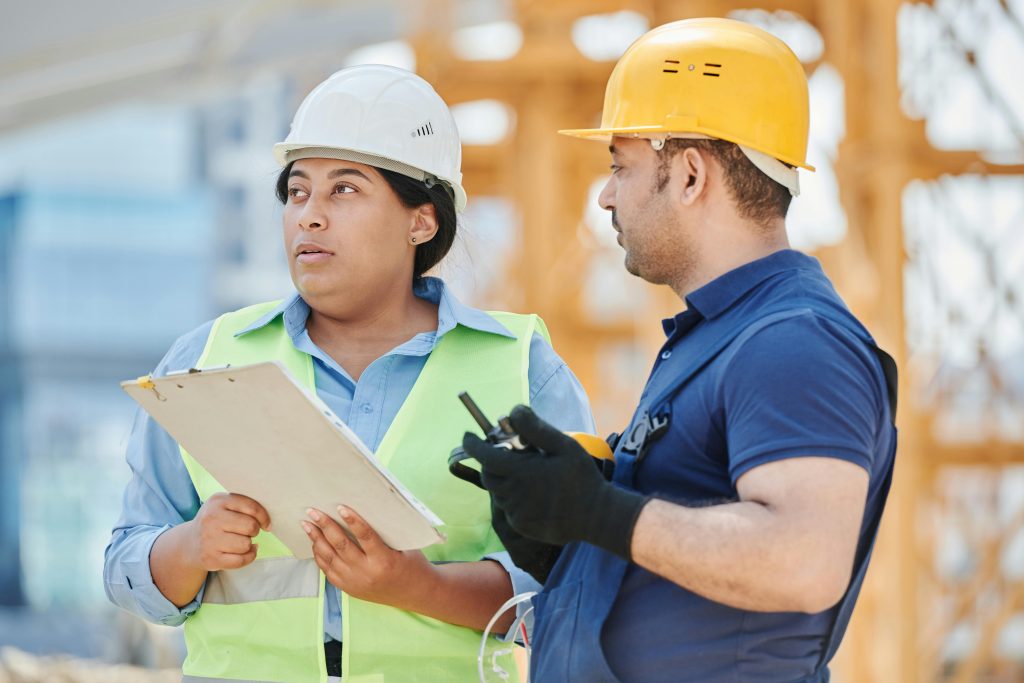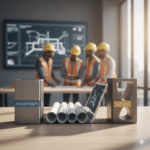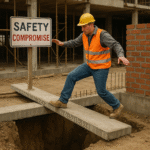|
Getting your Trinity Audio player ready...
|
In construction, we often think of safety in terms of hard hats, steel-capped boots, and meticulously crafted Safe Work Method Statements. These are, without a doubt, essential elements of keeping our workforce protected. But as I’ve come to realize through my years in this industry, true safety encompasses so much more than physical protection. It’s about creating an environment where every individual, regardless of gender, feels secure not just in body, but in mind and spirit as well.
The construction industry has long been a male-dominated field, and while we’ve made strides in recent years to attract more women, the numbers tell a sobering story. In 2023, approximately $50 million was invested in initiatives aimed at bringing more women into construction. Yet, despite these efforts, we saw a 1% drop in the number of women in the industry in 2024. This decline forces us to confront an uncomfortable question: Are we truly addressing the root causes of inequality and unsafe work environments, or are we merely treating the symptoms?
As a woman who has spent her career navigating the complexities of the construction world, I’ve witnessed firsthand the challenges that women face in this industry. These challenges go far beyond the physical risks inherent in construction work. They extend to the very culture of our workplaces, where women often struggle to feel truly safe, valued, and respected.
My Personal Experience as a FIFO Worker
Let me share a personal experience that illustrates the depth of this issue. It was a Saturday night, around 8:30 PM, after a long day of work. I had just finished dinner and was heading back to my room in the camp where I was staying. As I walked past a group of about 40 men enjoying a BBQ and drinks, I kept my head down and hurried to my room. What happened next was a series of events that left me feeling vulnerable, frightened, and utterly unsafe.
A man entered my room without permission, not once, but three times. Each time, he would open the door, turn on the light, and say “Hey!” before I could muster the strength to yell at him to leave. On his third attempt, I finally managed to lock the door, but my ordeal was far from over. He then tried to force the door handle and even attempted to open the window next to the door.
In those terrifying moments, my mind raced with fear. I remembered stories I’d heard about women being drugged and assaulted in the camp. I called security, but it took them an agonizing 13 minutes to reach me. Those were the longest 13 minutes of my life, filled with uncertainty and dread.
This incident, while extreme, is not an isolated case. It’s a stark reminder of the unique safety concerns that women in construction face every day. When we talk about safety for women in this industry, we’re not just talking about protection from physical harm on the job site. We’re talking about creating an environment where women feel secure from harassment, discrimination, and the constant threat of violation.
The statistics paint a grim picture. Research shows that 53% of women in the construction industry experience sexual harassment, yet only 17% feel comfortable reporting it. Moreover, 44% of women face gender discrimination. These numbers reflect a culture that is, quite frankly, unsafe for women in ways that go beyond the physical risks of the job.
But these aren’t just numbers on a page. They represent the lived experiences of countless women who have worked incredibly hard to break into this industry, only to be met with obstacles that threaten their professional and personal well-being. The emotional toll can be heavy, and for many women, it leads to burnout, isolation, and ultimately, leaving the industry altogether.
In addition to harassment, there’s another persistent issue that affects women’s sense of safety: the gender pay gap. Construction has the highest gender pay gap of all industries, at a staggering 31.8%. Beyond the obvious financial implications, this disparity sends a clear message to women: “You are not as valuable as your male peers.” It’s hard to feel secure—emotionally or otherwise—when your worth is continually undermined in this way.
This environment creates a deep sense of insecurity. Women are constantly battling for recognition, for equal treatment, and for the opportunity to demonstrate their skills and expertise. How can women feel safe in an industry where they are continually made to feel “less than”? Where their contributions are undervalued, and their safety—both physical and emotional—is not prioritized?
But here’s the thing: it doesn’t have to be this way.
There is a path forward, and it begins with acknowledging the full scope of what safety means for women in construction. This is about more than compliance with regulations or enforcing the use of PPE. It’s about addressing the underlying cultural and systemic issues that create unsafe environments for women—environments where harassment, discrimination, and exclusion are allowed to persist, often unchecked.
One of the most important steps we can take is to build a culture where psychological safety is prioritized just as much as physical safety. This means creating workplaces where women feel empowered to speak up without fear of retaliation, where leaders actively address issues of harassment and bias, and where everyone is held accountable for contributing to an inclusive, respectful work environment.
In my experience, I’ve seen how powerful it can be when leaders commit to fostering this kind of culture. It starts with small actions—things like listening to women’s experiences, implementing comprehensive anti-harassment policies, and offering mentorship programs that help women advance in their careers. But it’s also about the bigger, systemic changes—like closing the gender pay gap, increasing representation of women in leadership roles, and ensuring that women have the support and resources they need to succeed.
When we improve safety for women, we improve safety for everyone. Creating a culture of respect, inclusion, and accountability benefits not only women but all workers. It leads to higher morale, better productivity, and a more engaged and loyal workforce. In short, it makes the construction industry stronger, more resilient, and better equipped to tackle the bigger issues we face.
The truth is that many women leave the construction industry not because of the physical dangers, but because of the emotional and psychological toll the environment takes on them. When you are constantly navigating a hostile work environment, when you are made to feel unwelcome, unsafe, or undervalued, it becomes nearly impossible to sustain a long-term career.
So, what can be done?
The Way Forward to Ensuring Safety

The first step is recognizing that safety, in its fullest sense, must include the psychological and emotional well-being of women. This means creating a culture where harassment and discrimination are not tolerated, where pay equity is a priority, and where women feel supported in advancing their careers. It means developing policies and practices that address not only the physical hazards of the job but also the emotional ones. It’s about leadership making a conscious decision to foster an inclusive, respectful work environment where everyone feels safe.
We must also acknowledge that change will not happen overnight. Shifting the culture of an industry as large and entrenched as construction is a monumental task, but it is a necessary one. It requires commitment from every level of leadership, from the boardroom to the job site. It requires training and education that go beyond compliance and instead focus on building empathy, understanding, and respect for all workers, regardless of gender. And it requires holding people accountable for their actions—whether that means addressing harassment head-on, closing the pay gap, or actively promoting women into leadership positions.
But perhaps most importantly, it requires that we all find our voices and use them. My experience taught me the power of speaking up, of demanding to be heard and respected. It’s not always easy, and it often requires courage in the face of intimidation or dismissal. But it’s necessary.
For women in construction, finding your voice means refusing to accept the status quo. It means calling out inappropriate behavior when you see it, advocating for yourself and your colleagues, and pushing for the changes that will make our industry truly inclusive and safe for everyone.
For men in the industry, using your voice means being an ally. It means speaking up when you witness harassment or discrimination, even if—especially if—it’s coming from your peers or superiors. It means actively working to create an environment where your female colleagues feel respected and valued.
And for leaders in construction, using your voice means setting the tone from the top. It means making it clear that safety—in all its forms—is a non-negotiable priority. It means implementing and enforcing policies that protect all workers, and fostering a culture where everyone feels empowered to speak up about safety concerns without fear of retribution.
The construction industry is evolving. The challenges we face today—whether it’s labor shortages, project delays, or the need to adopt sustainable practices—demand creative, forward-thinking solutions. We need the best minds in the industry, and that includes the women who are too often pushed to the sidelines. By making safety—physical, emotional, and psychological—a priority, we create the conditions for women to not only stay in the industry but to lead it into the future.
As we move forward, let’s commit to creating a construction industry where safety truly means safety for all. Where women don’t just survive but thrive. Where diversity is seen as a strength, not a challenge to be overcome. And where every voice—regardless of gender—is heard, respected, and valued.
The path to this future starts with each of us finding our voice and using it. Whether you’re a CEO with the power to set policy, a site manager responsible for day-to-day operations, or a worker on the ground navigating the job site, you have a role to play in shaping the culture of this industry. Your voice matters. Use it to stand up for what’s right, to challenge the status quo, and to create a safer, more inclusive industry for all.
The future of construction depends on it. And together, with our collective voices raised in unity, we can build that future—one where true safety, equality, and respect are the foundation of everything we do.







